The strike of Tabrizin, the battle of Chaldaran – Safavid and Ottoman war

Tabrizin hit
Before the communist revolution, a large war cannon was kept in one of the squares of Tbilisi as a historical artifact. This ball had no historical connection with Georgia, but a special feature made it exposed to public viewing. The steel opening of the cannon had a gap the size of four fingers. The ball is now lost, but the Great War of Chaldran between the two great empires of the Middle East remains in history.
Become the Sultan's minister
Salim was one of the three sons of Ottoman King Bayazid Khan. With a coup-like action and with the support of a group of Yeni Cheri devotees, he drove his father from the throne and took over the empire.. Bayazid Khan died after some time and Salim strangled his brother "Qurqud" to complete his reign. His other brother Ahmed was also killed by trickery and there was no other claimant left for the government. Turkish historians refer to Sultan Selim with the adjective "Yavuz" which means sharp and victorious. During his rule, he served seven ministers. As soon as Ottoman ministers were appointed, they prepared their wills. That's why "Vazir Sultan Shui" was one of the curses of that time. Foscolo, the Venetian traveler, describes him as a bloodthirsty and patriot. Sultan Salim wrote a collection of poems in Persian language.
devotees
The army of the Ottoman Empire was one of the strongest armies in the world during its time, which caused a lot of trouble for European and Asian countries. This army had separate units and divisions that were equipped with firearms.
The Ottoman army was also equipped with regular artillery and naval forces, again recruited from Christian prisoners. Sometimes, the poor Europeans who lived in the empire would send their children to the service of the Sultan because he was an Ottoman military leader and benefited from a better life. In addition to cold weapons, the Ottomans had almost all types of firearms at that time, such as cannons. Differently, the wasp had a portable small cannon and guns with a barrel diameter of 3 cm.
friction
The reason for the Chaldaran war is the intervention of European countries. It is certain that the European governments that were exposed to a land war with the Ottomans or had commercial interests in the Middle East had a great desire to clash and weaken the two Muslim governments, but the other reasons for the conflict are more related to internal provocations than to Western conspiracies..
The Safavid government, which had its religious capital in Ardabil and Azerbaijan, propagated its religion through its disciples in these regions, and this propaganda was also extended to the Ottoman borders.. If someone became a Safavid disciple, he was automatically out of obedience to the Ottoman government. The next issue was the relationship between Ahmad's brother Salim and Shah Ismail. Ahmad had four sons, Salim was able to kill three of them, but the fourth son named Sultan Murad fled to Iran. Shah Ismail gave him shelter and even gave him the government of a district in Fars. Although Sultan Murad fell ill and died on the way to Fars, this shelter made the rumor of Ahmad's relationship with the Safavid court stronger. The Safavid king had good relations with the enemies of the Ottoman state, such as Sultan Malik al-Ashraf, the ruler of Egypt, and these relations are common in the world of politics, but the local rulers who lived in the border between the Safavids and the Ottomans were also inclined to Iran.. In the ancient world, the local rulers who ruled over limited areas between two empires, because they lacked the necessary military power, always paid tribute to one side and maintained their rule with political relations and treaties.. Noor Ali Khalifa Rumlu, the ruler of Malatya, Khan Mohammad Stajlu, the ruler of Diyarbakir, and Alaa al-Dawlah Zul Qadr were from this category.. At the same time, Alaa al-Dawlah was the ally of two warring empires, Rome and Egypt, and he received gifts from both. Iran's government had also attracted these rulers.. Apparently, Sultan Selim felt that his empire was eroding from the east, and naturally war could save him from this erosion..
Possible hesitation
But Sultan Salim needed preparations for the war. First, he arranged agreements with his European partners, the government of Moscow, Russia, the Prussian government of Austria-Hungary, and the rulers of Moldavia and Wallachia, for a temporary cessation of hostilities, so that he could concentrate his army in the east.. Then, with the support of religious fanatics, he purged the Shiites residing in the Ottoman Empire so that he would not have to worry inside the country. In the course of this purge, several thousand Shias were killed and the rest were moved to the other side of the country, i.e. European occupations, by enduring torture. Then he got fatwas from the government clerics for Jihad against "Zanadagh Qazlbashieh" and set up his camp in the city of Edirne, which happened to be the same place where he had staged a coup against his father, but there was still a problem.. Some senior military officers did not consider the war to be a good idea. Especially when they had to enter Iran. Finally, Salim called the warriors before him and gave a speech about the attack on Iran. In the end, when he asked their opinion, all the commanders remained silent and the silence continued until one of the Yeni Cheri veterans named Abdullah fell at the Sultan's feet and shouted, "O King, do not hesitate in this holy jihad, we are all ready to go to Ardabil." Oghli son of Ardabil, let's fight Shah Ismail. After that, the commanders had no choice but to agree to the Sultan's wish. Abdullah Yeni Cheri, who despite his graying hair was still the leader of a platoon, was honored with the rank of commander of the IRGC after this work..
one to ten
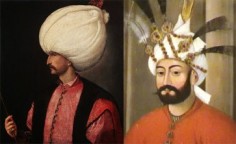
Chaldaran is located in the northwest of Khoi. In the country's divisions, this plain, which is about 750 square kilometers and is spread from east to west, is considered one of the functions of Siah Cheshme.. The Battle of Chaldaran took place in the area between the villages of Gol Ashane and Sadel, where traces of several graves can be seen..
Whichever of those numbers we accept, the ratio of Iranian to Ottoman soldiers will be one to ten. Although the repeated narration is 200 to 2 thousand. Regarding the duration, between one day and two days, the probability of two days of war is stronger.
The night before the war, some people suggested to Shah Ismail that they shoot at the Ottoman artillery, but Shah Ismail declared that we are not bandits..
battle scene
The first day of the war was mostly spent evaluating the two divisions. Sarobireh, who was born in Baneh and was famous for hunting leopards, assumed the command of Iran and attacked the Ottoman army.. The Turks retreated during the skirmish in order to draw the Iranian army into the firing range of the cannons. Shah Ismail was watching from a height and noticed this trick. But it was not possible to warn the Iranian army. An arrow hit Sar and Vibereh's head, but he continued to fight. Suddenly, artillery fire started. Shah Ismail entrusted the command to "Rostam Kalachermine" and entered the battle scene himself, but Sarobireh and the soldiers were killed by cannon fire.. Osmani proposed a temporary stop to the war and Shah Ismail accepted. This is how the first day ended. Shah Ismail bequeathed to Sheikh Mohammad Shabastri, who was with the army, to place his son Tahmasab on the royal throne after him, and the royal council, whose members he had determined, would take over the affairs of the country.. He also ordered Sheikh Mohammad to leave the region before the end of the campaign. Tomorrow, at the beginning of the day, three horsemen brought a letter written in Persian from Sultan Salim. On the order of the Shah, Ali Mohammad Hamdani opened it and read it in the presence of the commanders and elders of the camp. In the letter, under the condition of surrender, the Shah was given permission to take his property and family and run away. He also promised that the officers and soldiers would not be enslaved and would remain in captivity only until the end of the complete occupation of Azerbaijan, Kurdistan and Gilan.. Shah asked the opinion of those present and everyone welcomed the continuation of the unequal war. For this day, an attack plan was made on the artillery stationed on the Blue Hill. The Shah himself took command of the corps and attacked a part of Inkji's forces. Western forces were standing in front of and around the cannons to prevent them from being seen and estimating their number, but the Iranians had identified a part of the hill that was suitable for climbing on horseback.. The Iranian division suddenly changes its direction and reaches the top of the hill. The blue artillery, which did not expect to face the cavalry, failed, and the Iranians set fire to the gunpowder under the cannons. Sultan Salim saw from his safe camp that 250 cavalrymen were exploding one by one.. He pours his entire army into the field and starts the campaign. Rostam Kalachermine, the commander of Talish, is killed by fifty arrows. The Iranian army, which was armed with maces and swords, suffered a lot of casualties against the Ottoman guns. Shah Ismail receives several wounds and the Ottomans rush to capture him. Mirza Sultan Ali Afshar, who looked like the king, introduces himself as the king and is captured.. In the presence of Sultan Salim, he compares the Ottomans to cowards who take refuge behind their guns, and Salim beheads him after realizing his identity.. Sheikh Mohammad Hossein Shabastri brings a Koran in the middle of the square and swears to Shah Ismail to end the war.. The brave soldiers of Iran have no resistance against firearms. Shah Ismail gives up the war in the evening of Chaldran day and leaves the plain with 1,500 remaining soldiers before dark..
Conquest
The day after Chaldaran, Sultan Salim sent Fatah to Osmani and moved to Tabriz with his army, but he could not stay in that city for a long time.. On the other hand, the Yeni Cheris, who made up the main body of the army, had doubted the religious reasons of this war after seeing the worships and beliefs of the Iranians, and on the other hand, the commanders insisted on the insecurity in the foreign land.. The lack of food, which was deliberately created in Azerbaijan by the order of the Safavid government, had also put the Ottomans in a difficult situation.. Yeni Cheris used to put their food dishes upside down on the ground as a sign of protest, and after a while, Sultan Salim returned to his country.. According to a story, Shah Ismail, who returned from the front with 1,500 soldiers, brought 1,900 captives with him, while none of the Iranians were captured.. In another source, news is given about the execution of all Iranian prisoners in the Ottoman camp. But the main issue is the captivity of two of Shah Ismail's wives by the Ottoman army, which Turkish historians and some Iranians have narrated in detail.. A group of Iranian historians have denied this happening by citing reasons. According to this story, Tajali Khanom, who was captured, gave her two earrings as ransom and left the camp.. A peasant sheltered her and finally returned to the Shah, but Behruzeh Khanum remained among the Turks for a longer time.. There are even reports of women who fought in men's clothing, but considering the retreat of the Iranian army, it does not seem that the back of the front was exposed to war..
Weapons and motivation
The men who fought for the Safavids were close to Mullah Ali, and if they were killed, they were called martyrs.. After the Chaldaran war, the Iranian government realized that in addition to the motivation of the warriors, weapons are also essential for victory, and the introduction and use of rifles, which until then were considered impolite, became common.. In Turkey, the anniversary of Chaldaran war is celebrated, and in one of the cities of Azerbaijan, the cemetery of Chaldaran fighters is being forgotten.. Shah Ismail died years later in the city of Sarab due to an illness and was buried in Ardabil, and the ball that was split by Tabrizin's blow, if it remained intact, is somewhere in Russia, probably in the dark basement of a museum..
Mohammad Sarabi, East ۷ Shahrivar ۱۳۸۵


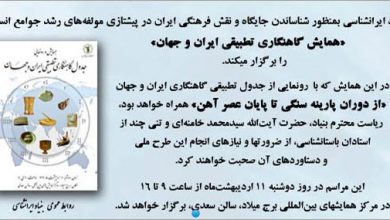
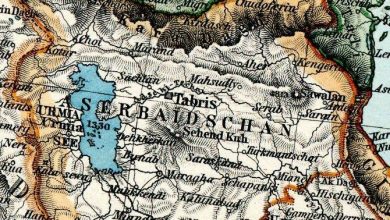
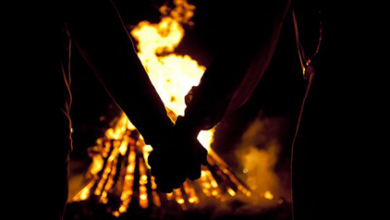
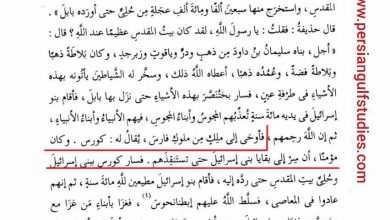
It was very complete and interesting, thank you
Salutations to the men of God who make the history of this country stable and watered with their blood